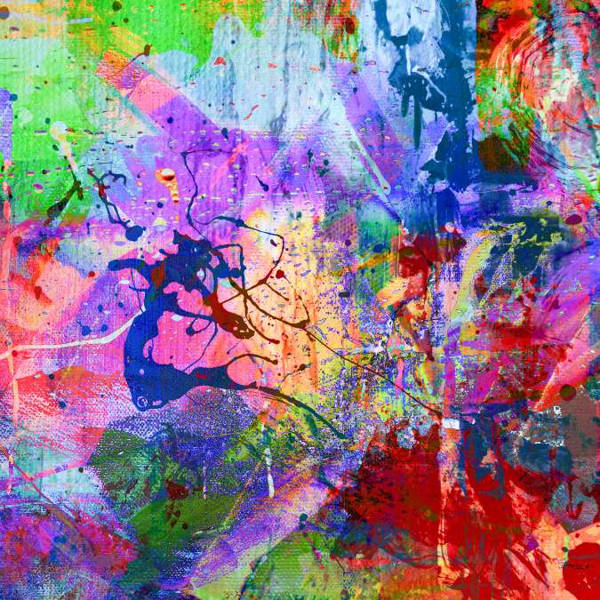
Why do some colors make us shiver, while others make us feel calm and safe? When you think of horror movies, Halloween posters, or creepy scenes in classic films, chances are certain colors instantly come to mind — deep reds, pitch blacks, eerie greens, and mysterious purples.
These aren’t random artistic choices. The colors we associate with fear are powerful psychological tools used by filmmakers, designers, and storytellers to trigger emotion, suspense, and anxiety. In this article, we’ll explore the hidden meanings and emotional effects of the colors that scare us most — and how they’re used in movie posters, iconic scenes, and horror imagery to make your heart race. 💀
🧠 The Science Behind Fear and Color
Before diving into each color, it’s important to understand why color affects our emotions so deeply.
Color psychology — the study of how colors influence our behavior and perception — shows that our brains associate certain tones with specific emotions and reactions. These associations are shaped by biology, culture, and personal experience.
- From a biological perspective, humans evolved to react to color as a survival mechanism. Bright red signals danger or blood; dark tones suggest the unknown or death.
- Culturally, colors acquire symbolic meanings — for instance, black is associated with mourning in the West, while white symbolizes death in parts of Asia.
- Emotionally, color affects how we feel and interpret a scene, even before we consciously notice it.
That’s why a horror movie’s palette is never accidental — every tone is chosen to intensify tension, evoke fear, or create a sense of unease.
Let’s take a closer look at the four most terrifying shades of all time.
❤️ Red: The Color of Blood, Passion, and Violence
Few colors are as emotionally charged as red. It’s the color of blood, fire, love, and rage — and in the world of horror, it represents danger and destruction.
🔪 Why Red Scares Us
Red triggers a primal reaction in the human brain. Studies in neuroscience have shown that the color red increases heart rate, blood pressure, and alertness. It’s the color we instinctively associate with:
- Blood and injury 🩸
- Fire and danger 🔥
- Emotional extremes (love, hate, anger, fear)
When we see red, our body literally goes into fight-or-flight mode, making it perfect for horror design.
🎬 Red in Movie Posters and Key Scenes
Red is everywhere in horror marketing — from The Shining’s bold title font to Carrie’s blood-soaked finale.
- “Carrie” (1976) – The infamous prom scene, drenched in blood, uses red to represent both humiliation and revenge.
- “It” (2017) – Pennywise’s red balloon is a symbol of childlike innocence twisted into something terrifying.
- “Suspiria” (1977) – Dario Argento’s masterpiece uses deep, saturated reds throughout its scenes to create a dreamlike, nightmarish world.
- “The Shining” (1980) – From the word “REDRUM” scrawled on the wall to the elevator of blood, Kubrick uses red to suggest both insanity and inevitable doom.
Even in posters, red typography or imagery instantly tells the viewer: this story is about violence, terror, and intensity.
🎨 Red’s Dual Nature
Interestingly, red is not only frightening — it’s also seductive and magnetic. Many psychological thrillers use this duality to blur the line between attraction and danger (think of Jennifer’s Body or Dracula).
That contrast — between love and death — makes red one of the most complex and effective colors in horror storytelling. ❤️🔥
⚫ Black: The Color of Death and the Unknown
When we think of fear, we almost always picture darkness. Black represents the void, the absence of light, and with it, the fear of the unknown.
🌑 Why Black Triggers Fear
From an evolutionary point of view, darkness meant danger. In the dark, we couldn’t see predators, obstacles, or threats. That ancient fear remains deeply wired in our brains — the fear of what we can’t see.
Psychologically, black symbolizes:
- Death and mourning ⚰️
- Evil and corruption 😈
- The supernatural or demonic 👹
- Power and mystery
It’s no surprise that so many horror villains wear black — from Dracula’s cloak to the Babadook’s shadowy figure.
🎬 Black in Cinematic Imagery
Black is not only symbolic — it’s practical in creating fear through visual contrast.
- “Psycho” (1960) – Hitchcock’s use of light and shadow turns black into a tool of psychological terror.
- “The Babadook” (2014) – The monster, hidden in shadows, embodies how blackness conceals what we fear most.
- “The Exorcist” (1973) – The poster of Father Merrin standing under a single beam of light in a dark street perfectly symbolizes the eternal battle between light and darkness.
- “The Blair Witch Project” (1999) – Filmed almost entirely in darkness, the movie exploits our imagination — the real monster is never shown.
Black is also a dominant color in horror posters, often as a background that allows blood-red titles or glowing eyes to pop out.
🧥 The Power of the Unknown
In color psychology, black doesn’t only represent evil — it also implies sophistication and control. That’s why villains like Darth Vader or Maleficent wear it proudly: it conveys authority, secrecy, and menace.
In horror, black is the stage where fear plays out — the silent abyss that hides every nightmare.
💚 Green: The Color of Poison, Decay, and the Unnatural
While green is often seen as fresh and peaceful in nature, in the context of horror it takes on a dark and unsettling side.
☠️ Why Green Can Be Disturbing
Green in horror often represents what is toxic, decaying, or corrupted. Its association with poison, disease, and monsters makes it deeply effective in creating unease.
We subconsciously associate certain shades of green — particularly acidic or neon tones — with:
- Rotting flesh or infection 🤢
- Toxic substances ☠️
- Aliens or unnatural lifeforms 👽
- Moral corruption or madness
🎬 Green in Horror Aesthetics
- “Frankenstein” (1931) – The Monster’s sickly green skin became a defining image of unnatural creation.
- “The Exorcist” (1973) – Regan’s vomiting scenes and the eerie green lighting during the possession symbolize spiritual and physical corruption.
- “Alien” (1979) – The greenish hue of the ship’s interior and the alien’s acid blood emphasize danger and otherness.
- “The Ring” (2002) – The film’s pale, green-tinted visuals make the entire movie feel contaminated and sickly.
Even modern horror posters use green glows or mist to represent radioactive or supernatural forces, suggesting that something evil is growing or mutating.
🧬 The Psychological Power of Sickly Green
From a neurological point of view, unnatural greens — those closer to yellow or neon — trigger mild nausea or discomfort. This makes them ideal for films or posters that want to visually communicate contamination or evil presence.
That’s why green is the color of horror that disgusts as much as it frightens.
💜 Purple: The Color of the Supernatural and the Uncanny
Purple may seem elegant or even royal, but in the world of fear it’s often the color of mystery, magic, and madness.
🔮 Why Purple Feels Unsettling
Purple has long been linked to the mystical and the spiritual. It sits between red and blue — two opposing emotions (passion and calm). That tension gives purple an unnatural, dreamlike, and sometimes sinister quality.
In horror, purple often represents:
- Witchcraft and sorcery 🧙♀️
- The supernatural 👻
- Hallucination or altered perception 🌫️
- Death and decadence
🎬 Purple in Visual Storytelling
- “The Witch” (2015) – Uses subtle violet tones at twilight, evoking pagan mysticism and the presence of dark forces.
- “Hereditary” (2018) – Purple lighting and filters appear in key supernatural moments, heightening the sense of unease.
- “Suspiria” (2018 remake) – The film’s use of purple in rituals connects it with power and forbidden spirituality.
- “Beetlejuice” (1988) – A lighter example, where purple adds an otherworldly and eccentric touch to the afterlife.
In graphic design, purple often appears in Halloween marketing and ghost stories, pairing perfectly with orange or black to convey enchantment mixed with danger.
👁️ The Hidden Emotion in Purple
Psychologists describe purple as ambiguous — it can evoke luxury or lunacy, spirituality or sin. This emotional uncertainty makes it ideal for psychological horror, where fear comes not from gore, but from confusion and instability.
🎨 The Art of Fear: How Colors Work Together
While each color has its own psychological effect, the real power of horror comes from how these colors interact.
- Red + Black → Violence and death (classic slasher look).
- Green + Purple → Madness and magic (supernatural or gothic themes).
- Red + White → Innocence corrupted (“Carrie” or “Midsommar”).
- Black + Blue → Isolation and dread (“The Others”, “The Sixth Sense”).
Horror designers, cinematographers, and poster artists carefully balance these tones to guide your emotions subconsciously — you don’t just see fear, you feel it.
🕯️ Conclusion: Fear Is a Matter of Color
Colors have the power to tell a story before a single word or sound is heard. In horror, they’re more than decoration — they’re psychological triggers that shape how we experience fear.
- Red shocks and provokes.
- Black hides and threatens.
- Green infects and disgusts.
- Purple enchants and disturbs.
Whether it’s a movie poster glowing with red letters, a haunted house bathed in eerie green light, or a shadowy figure emerging from the black — our reaction to color is instinctive, emotional, and universal.
Next time you watch a horror film or see a spooky Halloween ad, look beyond the monsters. The real architects of fear are often the colors themselves. 🎃
Sources:
- Smithsonian Magazine: “The Psychology of Color and Fear” (2023)
- BBC Culture: “How Horror Uses Color to Make Us Afraid” (2022)
- National Geographic: “The Science of Why Red Triggers Emotion” (2024)
- American Psychological Association: “Fear, Perception, and the Power of Color” (2023)
- Film School Rejects: “Color Symbolism in Horror Movies” (2024)

